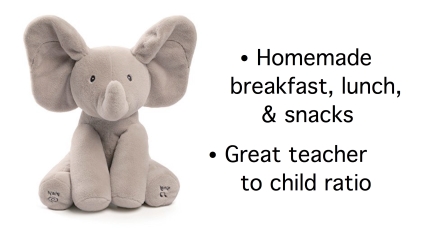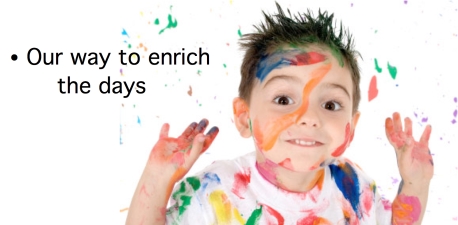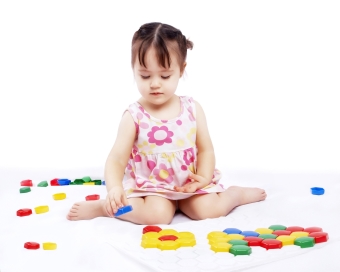Preschool & Pre-K

This is a beautiful stage of early childhood. Children are finishing up their transformation and are experiencing less toddler type of behavior issues. They are less frustrated, more capable of cooperation, and are more capable to work with each other. Their tender minds are full of imagination and possibilities that are awaiting teachers to unleash them. With proper stimulation and guiding, this should be the stage of expression for them.
This program is built on top of our toddler program. We still give quality attention to each child in this stage to assist them with any behavior issues and nurture them to fully transform. At the same time, we give them more room to grow and to be independent. We continue all educational elements such as social, communication, self-help, academics and self-esteem.
 On top of this, we emphasize in the quality of friendships, stimulate their creativity and ability to express themselves, and enhance their power of observations.
On top of this, we emphasize in the quality of friendships, stimulate their creativity and ability to express themselves, and enhance their power of observations.
For quality of friendships, we pay attention to not only how well a group of children play together but also the relationship between any two children. We value the depth of the relationship and we monitor and guide how two of them resolve conflicts and how sophisticated their play can go. We also welcome and encourage healthy leadership.
To stimulate their creativity and ability to express themselves, the teachers must be creative and fun. For example, talking with children is an very important activity in our program. A teacher would throw out ideas and thoughts to stimulate the children to describe their interests and wishes, to talk about things happening in their personal lives, or to even have them make up their own stories and change simple talking into story telling.
So our activity of talking is very dynamic and creative. Furthermore, we apply the same principle to other areas such as circle time, dramatic plays, and arts and crafts.
In our version of arts and crafts, our art teachers use drawings or play dough models to throw out ideas to stimulate the children to make up their own ideas and express them through art work.
To enhance their power of observation, we give children a variety of situations and encourage them to figure out things on their own. We also use games to stimulate them. For example, a version of our "Monkey See Monkey Do" involves Lego blocks. Every player has a set of Lego blocks same as the teacher's. The teacher makes a structure out of his or her set of blocks and children try to copy it by using their own sets of blocks. Players can also take turn to lead the game. The level of difficulty can be controlled by setting limits on the numbers of blocks.
Each players' success depends on their ability to observe.
 So as time goes on, the children will be able to handle more complicated things.
So as time goes on, the children will be able to handle more complicated things.
Enrichment Program
We are proud of having a highly effective enrichment program. It is based on our own recipe with ingredients such as variety, fun, and encouragement. The success of our program depends on the fact that we carefully track each child's progress and appetite to work in a learning project. Based on this information of the child, we customize a set of activities of the learning project for him or her.
For instance, we have a learning project about quantity and numbers. Its materials includes row counting, skip counting, quantity awareness(counting/quantifying, and quantity representations), simple addition, simple subtraction, and concepts of zero & negative. This learning project helps a child's cognitive development, language development, and fine motor skills. Typically, the project applies to toddlers till they are 4 years old.

Suppose we have a child named Joe who is going through the project. He has a good concept of 2 but is confused with 3 and up. He is also interested in the project but has a short attention span. He likes group games and loves stories. Based on this information, we could customize a set of activities for him. First of all, he would be benefited from observing other advanced children counting objects or doing simple addition. We would also pay attention to him in our interactive story time. His teacher would plan a few counting-I-Spy games in the story time based on pictures in story books (e.g. I-Spy 3 little pigs). When Joe plays treasure hunt during play time, his teacher can do the treasure hunts with multiple treasures for him (e.g. to find 5 hidden objects to complete the hunt). These show the basic idea about how we use the information on Joe. We use the things he likes to help him with the concept of 3 and up.
In reality, we go even farther than the idea outlined here. We do this in practice because we believe that every person has his or her own unique signature of learning. For Joe, we would read and understand him much more before doing anything. For example, we would see if he has a good bond with us, if he has basic knowledge of the area he is going to learn next, and his learning behavior. Making sure that a child has a good bond with us is an important element of this program. This is so because young children can only effectively interact with someone whom they can trust and feel right with.
All of the children grown up from our daycare (from infant to Pre-K) are doing very well in kindergarten. They can all do simple arithmetic, read, and enjoy art and music. Some of them can even handle carry-over addition, time, calendar, maps, and level 4 or 5 children's books. They are all extremely comfortable with academic works and what makes us happy is that all of them have great learning appetites and good attention spans, and they are also interested in exploring new things.

